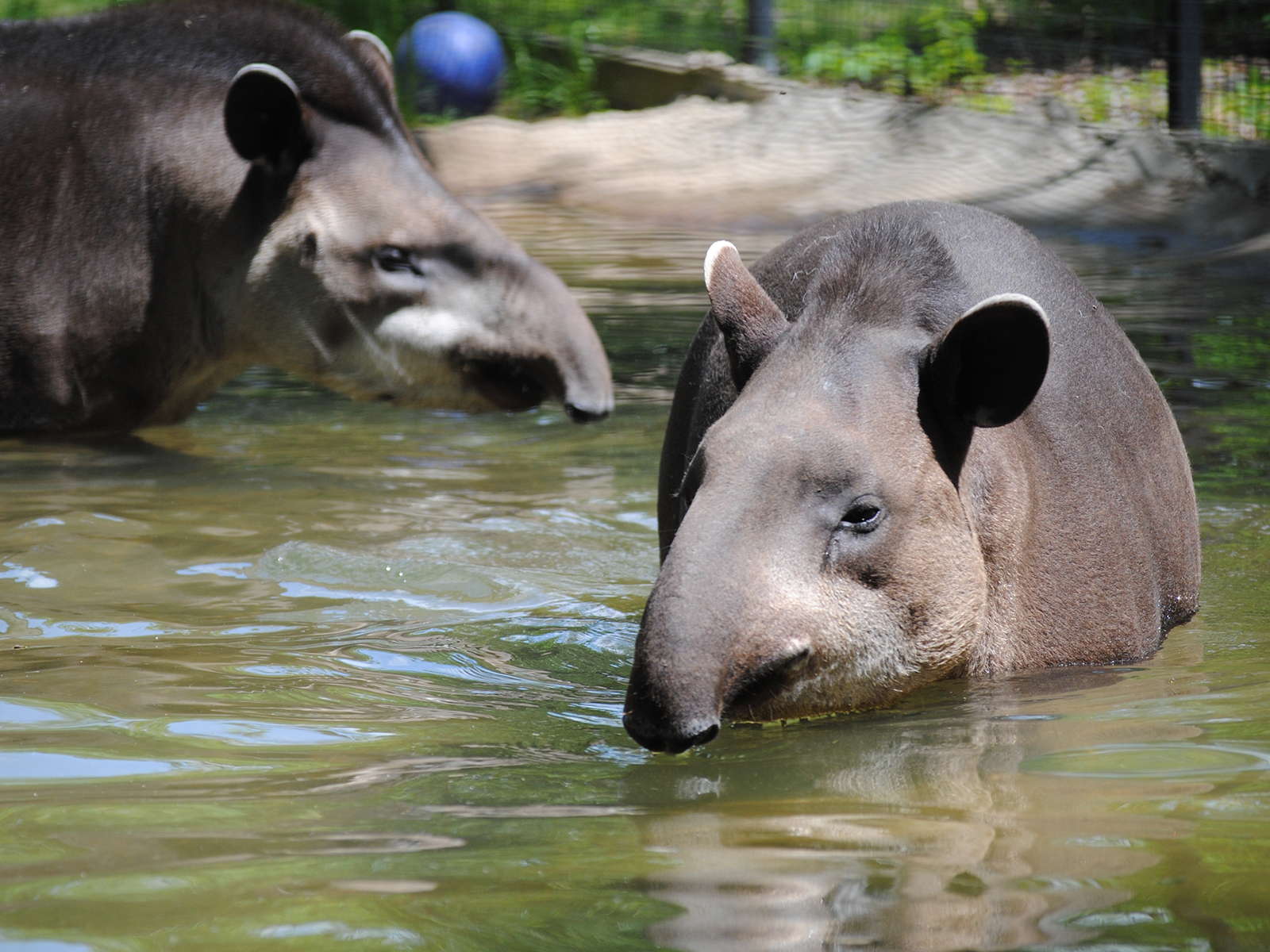Brazilian Tapir
Tapirus terrestris
Class
Mammalia
Order
Perissodactyla
Family
Tapiridae
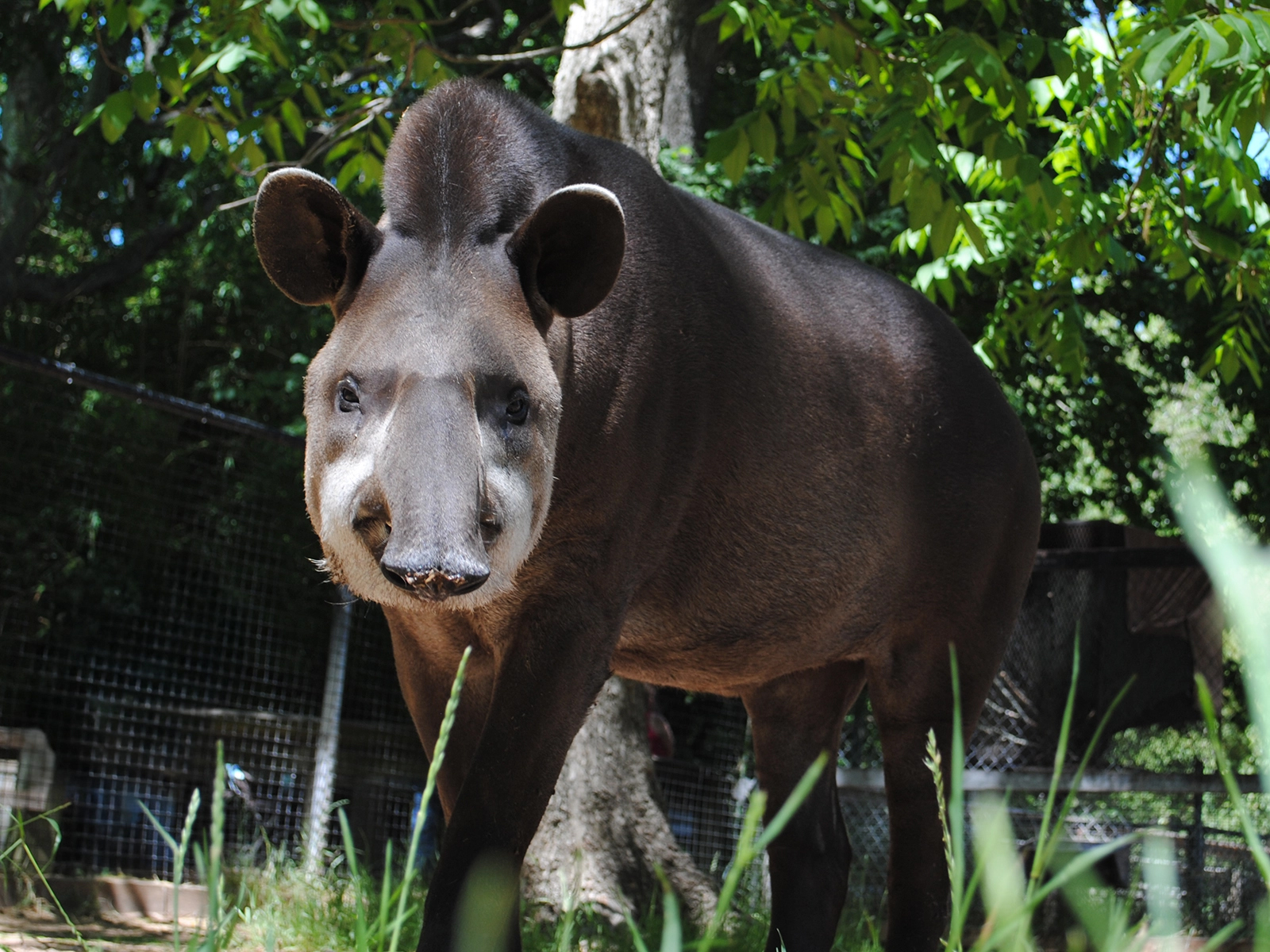
Mammalia
Perissodactyla
Tapiridae
South America
Length: 71 - 98 in
Height: 29 - 47 in (to shoulder)
Weight: 330 - 550 lbs
Wooded, grassy habitats and jungles
Offspring: 1
Gestation: 13 months
Grasses, leaves, buds, soft twigs, fruits of low growing shrubs, aquatic vegetation and shoots
Vulnerable
Tapirs are the largest terrestrial mammal native to the Amazonian region of South America.
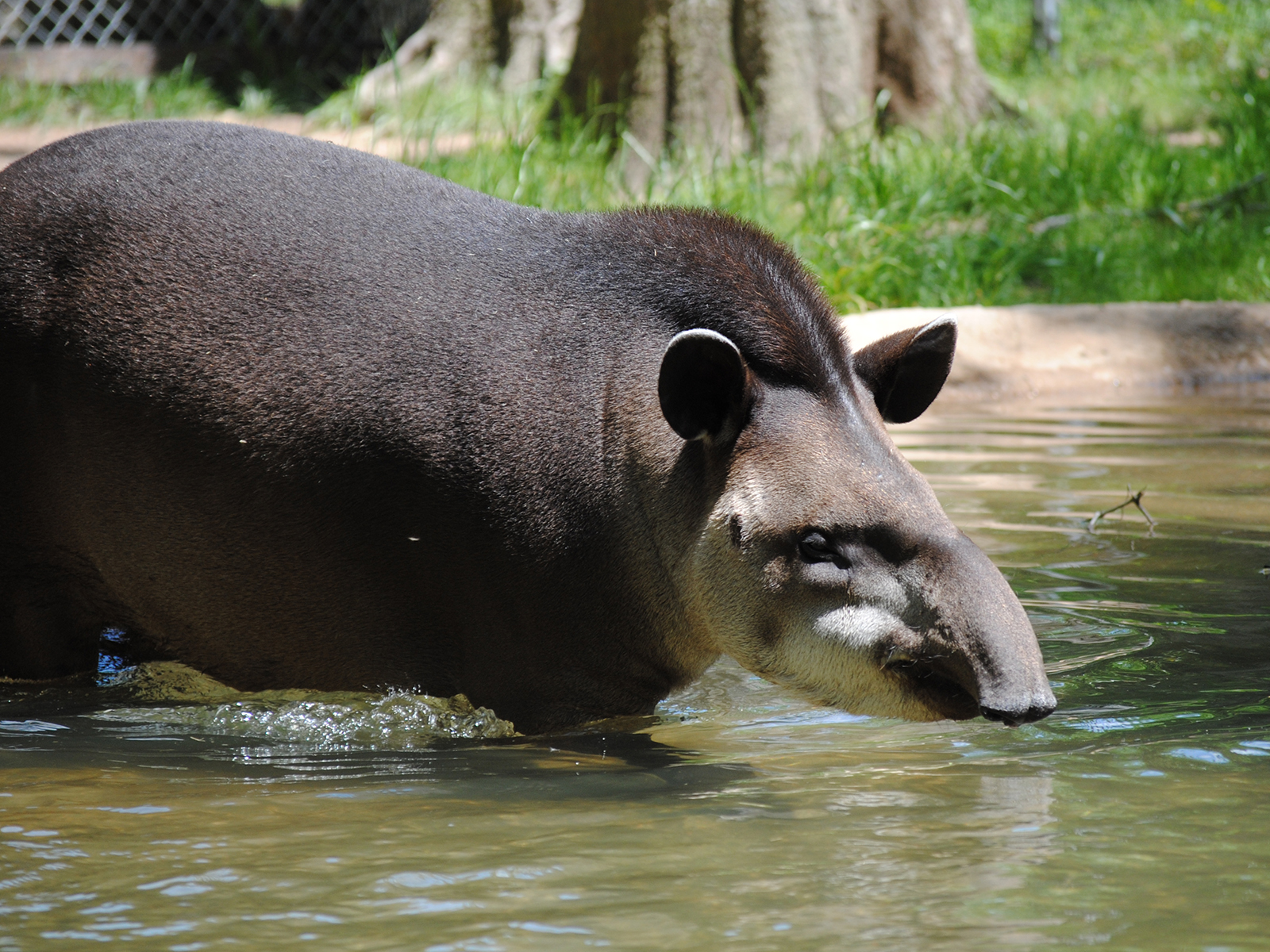
They are able swimmers and will take freely to water when pressed by predators like jaguars and crocodilians.
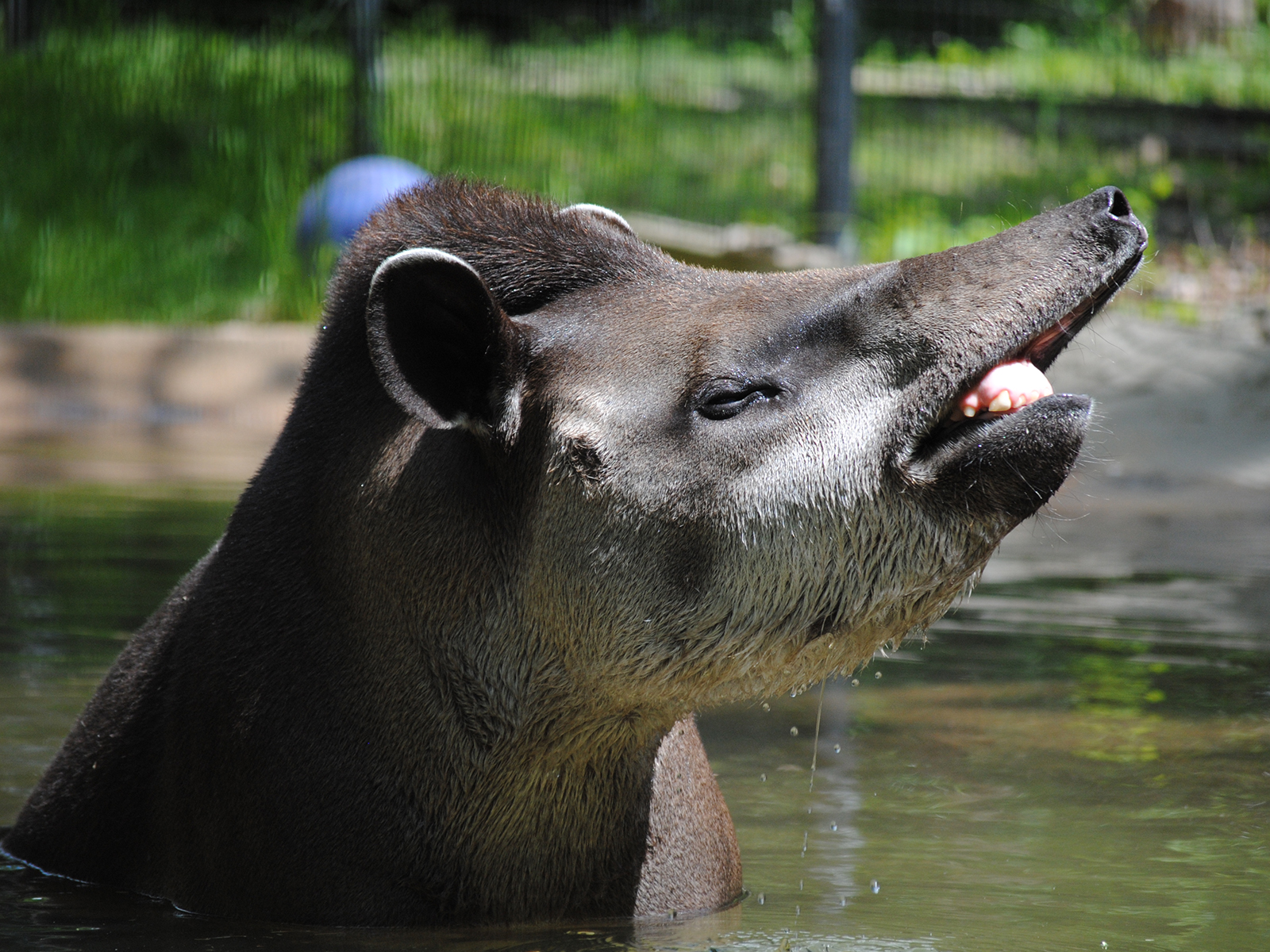
The tapir's head extends into a short, fleshy trunk, which is actually a prolonged nose and upper lip that is combined into a flexible snout like an elephant's trunk. Its trunk-like nose is a sensitive "finger" used to pull leaves and shoots towards its mouth. Its small, deep-set eyes are protected from brush and thorns common in the its habitat.
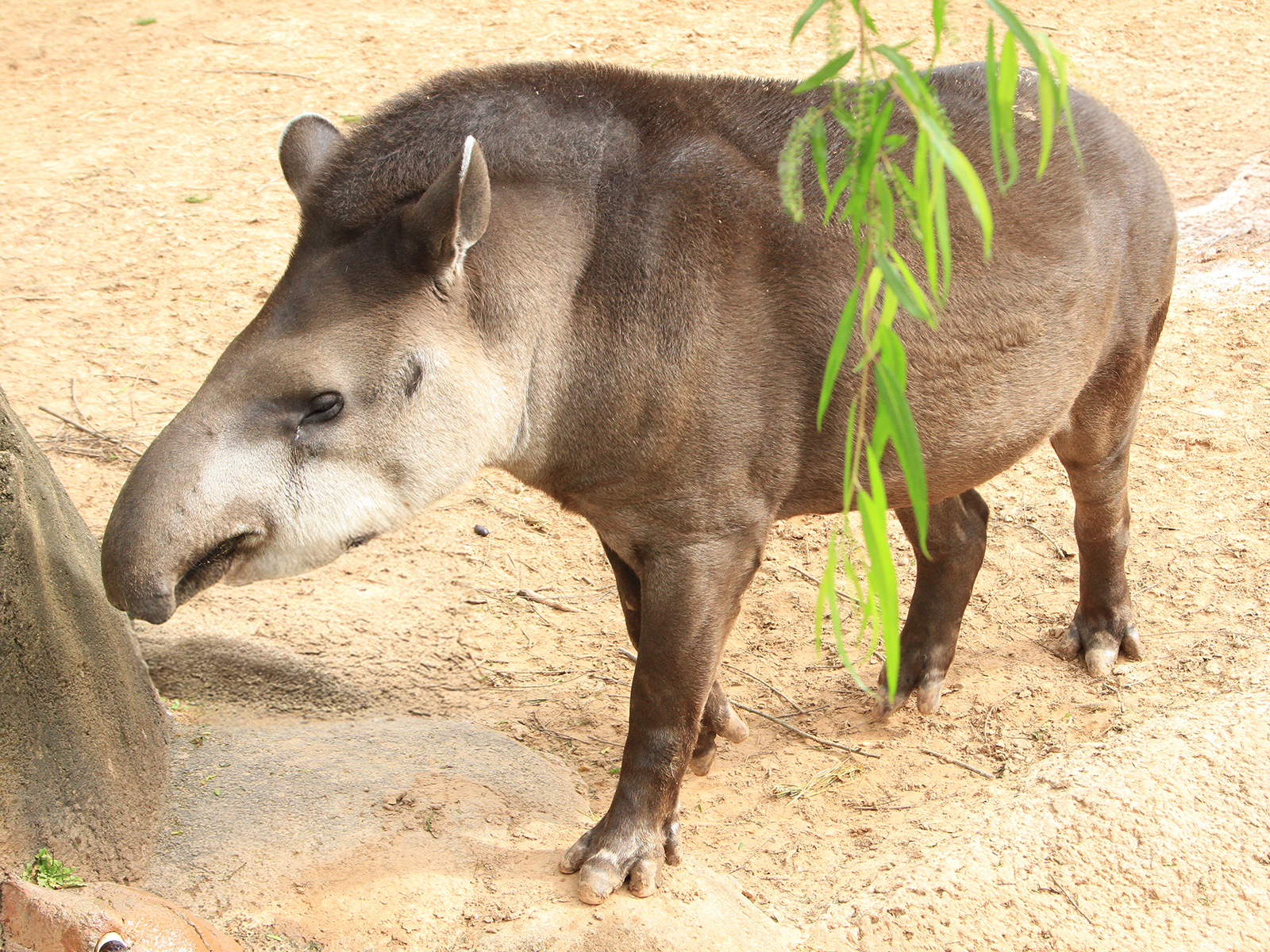
Tapirs help their ecosystem by smashing down small trees and breaking branches to make trails, which aid other creatures in moving through the forest, too. They also play an important role in their ecosystem as major seed disperser.
Donate to Friends of the Alexandria Zoo. Alexandria Zoo contributes financially to Zoo Conservation Outreach Group (ZCOG), which supports conservation efforts in the Americas for species including the Brazilian tapir.
Reduce Your Impact on Their Habitat. The main threats to Brazilian tapirs are habitat loss due to deforestation for agriculture and hunting. You can help by supporting sustainable practices that don't contribute to the destruction of the Amazon, Atlantic Forest, and other biomes where tapirs live.
JJ: Born July 20, 1994
